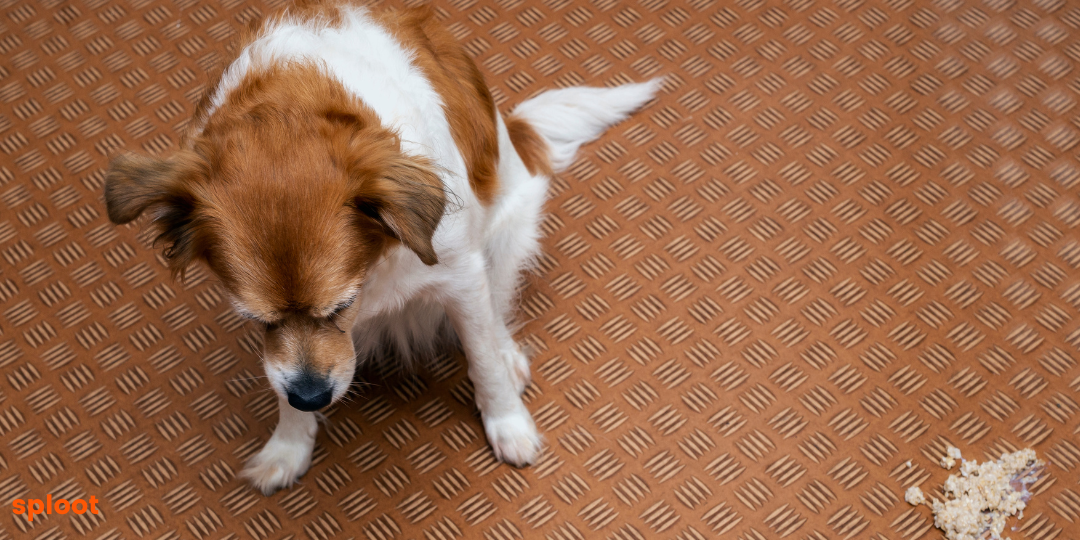My Dog Is Vomiting White Foam: Understanding Possible Causes and What to Do

As a dog owner, encountering your pet vomiting white foam can be alarming. This symptom can point to several underlying conditions, ranging from minor digestive issues to more severe medical concerns. This blog post will explore the reasons behind this symptom, offer practical home treatment advice, and when to seek professional veterinary care.
What Causes Dogs to Vomit White Foam?
Dog vomiting white foam is typically a sign their stomach is empty and the vomit consists mainly of gastric juices. Here are some common causes:
1. Indigestion or Gastric Irritation
Dogs often vomit white foam when they have eaten grass or an irritating substance, or when they have an upset stomach. This type of vomiting usually resolves itself quickly.
2. Bilious Vomiting Syndrome
This occurs when bile builds up in the stomach or intestines and irritates it. It's particularly common in dogs that go long periods between meals.
3. Kennel Cough or Respiratory Issues
Kennel cough or other respiratory infections can cause your dog to cough up white, foamy phlegm. This condition often includes symptoms like a runny nose or eyes, sneezing, and a strong cough.
4. Pancreatitis
Pancreatitis can cause dogs to vomit white foam along with showing signs of pain, diarrhea, lethargy, and loss of appetite. This condition requires immediate veterinary attention.
5. Parvovirus
Especially in puppies, parvovirus can cause severe vomiting, often with white foam, alongside bloody diarrhea and extreme lethargy. This is a life-threatening emergency.
6. Rabies
Though rare due to vaccinations, rabies can also lead to foamy saliva and vomiting.

Home Treatments for Dog Vomiting White Foam
Here is the treatment for dog vomiting white foam and you should take these steps at home to help alleviate their discomfort-
1. Ensure Proper Hydration
Keep your dog hydrated, but avoid giving large amounts of water at once, which can lead to further vomiting. Instead, offer small, frequent sips of water.
2. Fasting
Allow your dog's stomach to settle by withholding food for 12-24 hours. Afterward, introduce a bland diet such as boiled chicken and rice in small portions.
3. Gradual Feeding
Once vomiting has ceased, gradually reintroduce their regular diet over several days, starting with small, frequent meals.
4. Avoid Irritants
Ensure your dog does not ingest irritants such as toxic plants or inedible materials.
5. Monitor Symptoms
Keep a close eye on your dog’s behavior and physical condition. Note any changes and consider maintaining a log of what they eat and their vomiting episodes.

When to Consult a Veterinarian
While mild cases of vomiting can often be managed at home, certain situations require veterinary attention. Contact your vet if:
- The vomiting persists for more than a day
- Your dog shows signs of pain, distress, or lethargy
- There is blood in the vomit
- Your dog is a puppy or an elderly dog, as they are more vulnerable to dehydration
- Your dog has preexisting health conditions
- Symptoms of serious diseases, like parvovirus or pancreatitis, are evident
Prevention: The Best Medicine
Preventing your dog from vomiting white foam starts with regular veterinary check-ups, a balanced diet, and keeping an eye on what your dog eats and drinks. Ensure your pet is vaccinated and dewormed as recommended by your vet.
Conclusion
Vomiting white foam can be a sign of something as simple as an empty stomach or as serious as a life-threatening infection. By understanding the possible causes and appropriate responses, you can better care for your furry friend during these distressing episodes. Always err on the side of caution and consult with your veterinarian when you are concerned about your dog's health. Remember, prompt action can make all the difference in your pet’s well-being.

